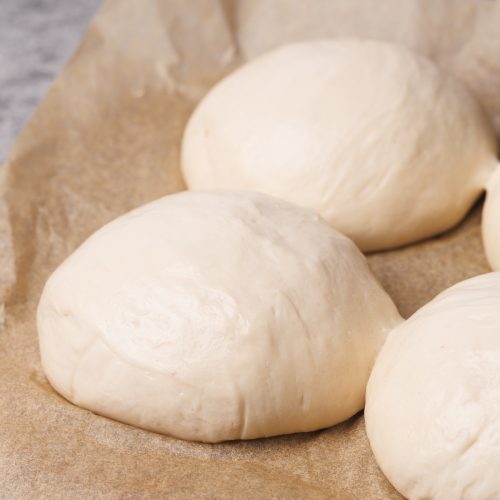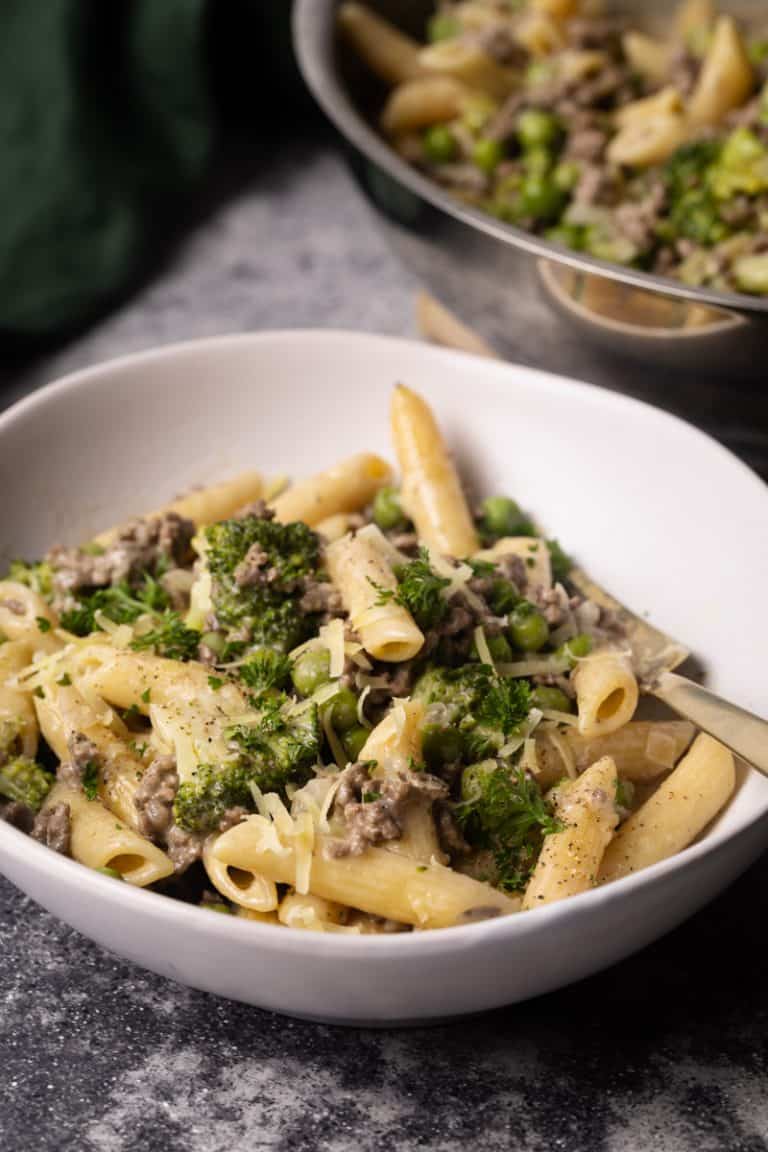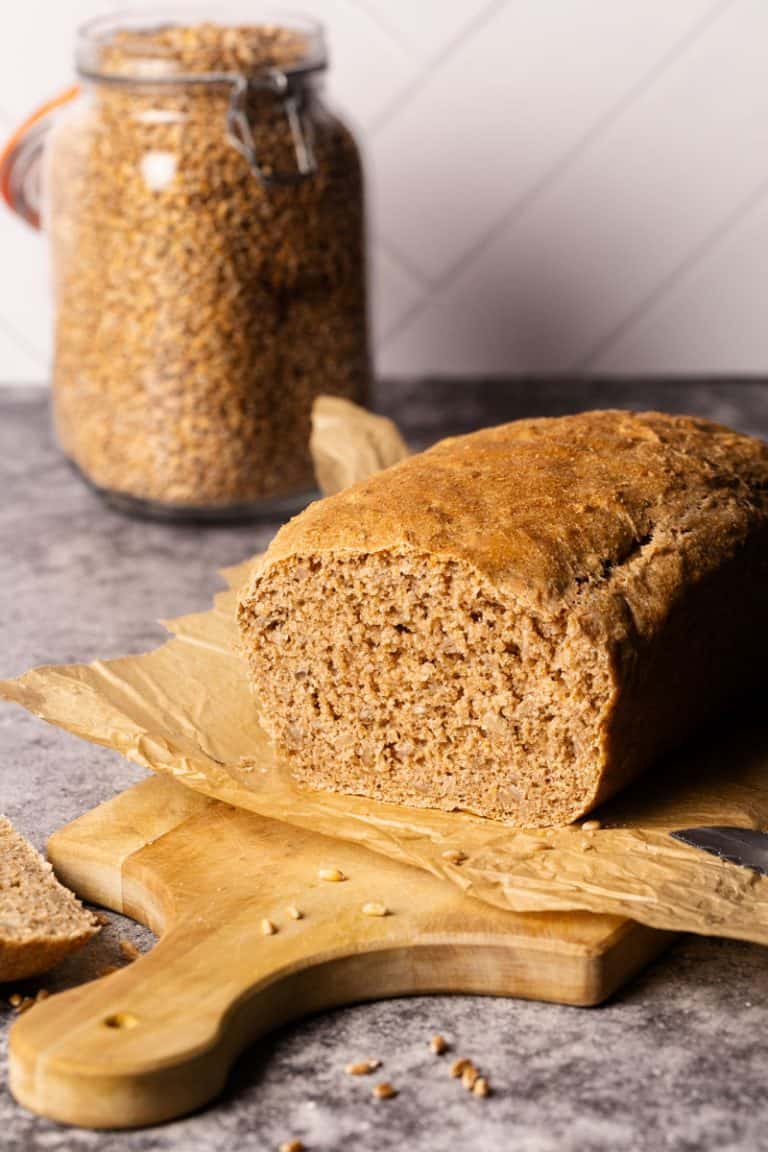Cold-Fermented Pizza Dough
This Cold-Fermented Pizza Dough made our pizza nights a breeze thanks to meal-prepping the dough well in advance and letting it slowly ferment it in the refrigerator overnight. With just 4 ingredients and 10 minutes of hands-on prep time, you can make restaurant-quality pizza dough at home and have it ready to go for stress-free pizza nights. Plus you’ll get to enjoy a more flavorsome, fluffy crust with chewy texture. A win-win in my books!
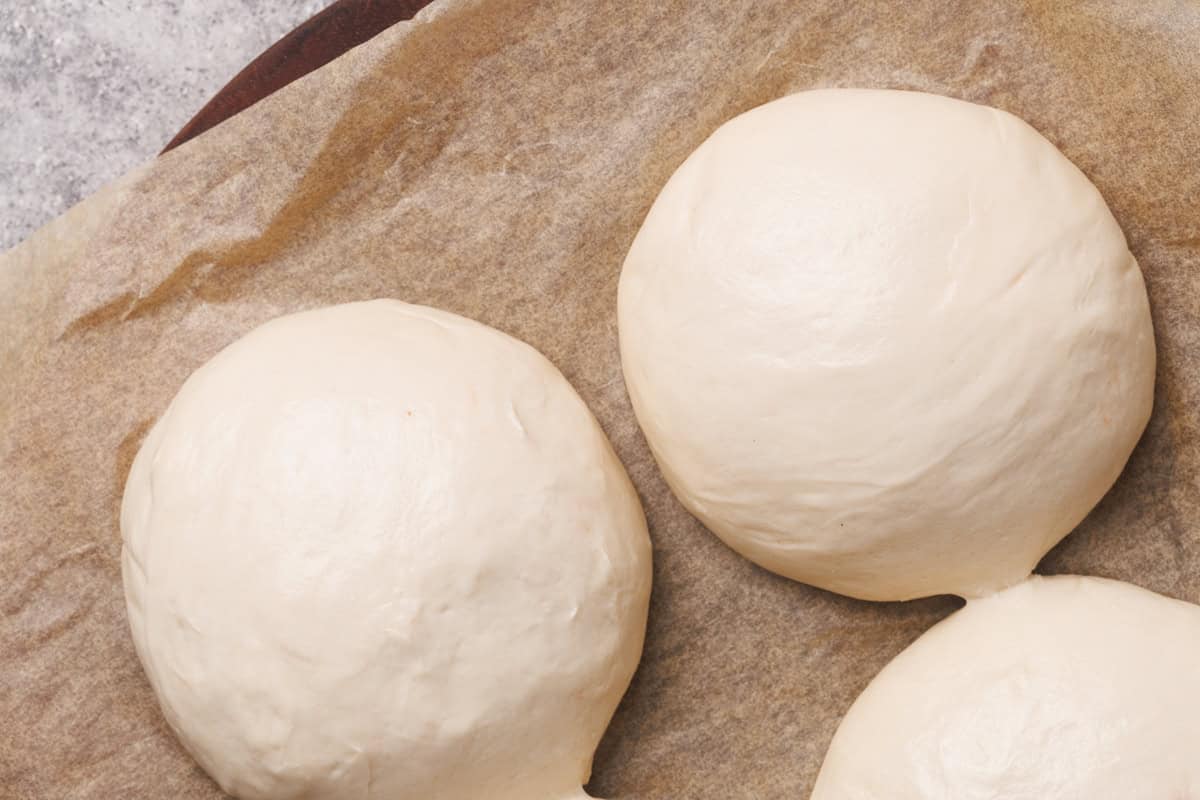
We bought an Ooni pizza oven last Christmas and ever since I have been testing pizza dough, sauce recipes, and topping combinations of course.
One challenge I faced quickly was to make pizza night relaxing without spending too much time prepping ingredients, making sure the oven temp is correct, being busy cooking pizza, and ultimately missing out on time with the family and friends.
Meal prep and cold fermentation come in handy at that point. Plus the flavor develops over time and pizza crust actually tastes better in my opinion due to the slow fermentation process.
Similar to my cold-fermented bread, you can make the dough in advance and store it in an airtight container in the refrigerator until you’re ready to cook the pizza. You can even do that up to 3 days in advance if you want to be super organized. A meal prep dream!
For more pizza night staples that you can easily prep in advance, check out my no-cook pizza sauce and mint cashew pesto as well.
If you loved this Cold-Fermented Pizza Dough Recipe or any other recipe on my website, please leave a 🌟 star rating below. Thank you!
Cold-Fermented Pizza Dough
Ingredients
- 450 ml water room-temperature
- 2 g instant dry yeast
- 750 g bread flour 00 flour
- 22 g salt
Instructions
- Combine the water and instant dry yeast in a large mixing bowl. Stir to combine for the yeast to dissolve.450 ml water, 2 g instant dry yeast
- Add the flour and start mixing with the dough hook of your stand mixer or your hands. Once you have a shaggy dough, add the salt.750 g bread flour, 22 g salt
- Combine everything to a smooth dough and knead the dough with a stand mixer for 5 minutes or 10 minutes by hand on a lightly floured surface.
- Add the dough back into to the bowl and cover it with a plate or damp tea towel. Let it rest for 1 hour at room temperature to allow the yeast to kick-start and the gluten to relax.
- After the initial resting time, divide the dough into 4 equal-sized portions and shape them gently into round dough balls. Place them in a large airtight container, about 1 inch apart, and store them in the fridge overnight or for at least 8 hours.
- Remove the container from the fridge 2 hours before you're making your pizzas for the dough to warm and relax. Shape the dough into pizza bases and bake with your desired toppings.
Notes
Nutrition
Ingredients and substitutions
See the recipe card for full information on ingredients and quantities.
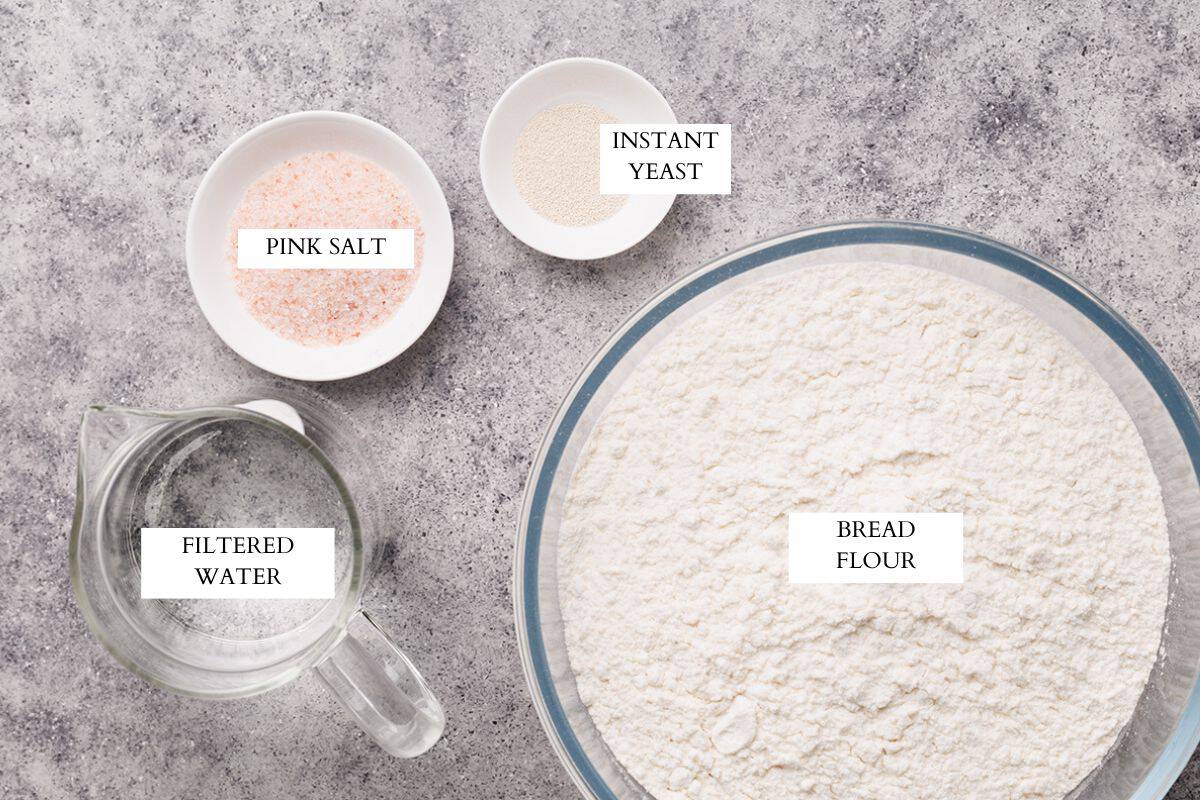
- Flour – Strong bread flour, aka as 00 flour, works best as it creates a tighter gluten structure resulting in a more elastic dough making it easier to stretch and shape the pizza. You can use all-purpose flour if needed.
- Water – I use filtered water as the chlorine in tap water can impact the rise of the yeast. Room temperature is good. It doesn’t have to be lukewarm or the yeast will work to hard too quickly.
- Yeast – Instant yeast is great for convenience. You can use active dry yeast or fresh yeast too but you’ll need to activate those with a little sugar first.
- Salt – I use pink salt for my cooking and baking. Table salt or sea salt would work too.
How to make cold fermented pizza dough
See the recipe card for full information on the method.

1. Dissolve the yeast in water.

2. Add the flour and combine it into a shaggy dough. THEN add the salt.

3. Knead the dough for 5 minutes and cover it for 1 hour for the yeast to kick start.

4. Divide the dough into 4 equal-sized portions, shape them gently into individual balls, and store them in an airtight container in the fridge.

Recipe tips
Use scales: Digital scales are a must-have to get the ratios right. 2g of yeast for example will be hard to measure correctly otherwise.
Little yeast: 2g seems like nothing but refrain from using more as the dough will taste overly yeasty otherwise given the long fermentation time.
Storage container: I bought a shallow wide plastic container for pizza dough that fits nicely into my backup fridge. Plan ahead and make sure you have enough fridge space for the dough to slowly ferment.


